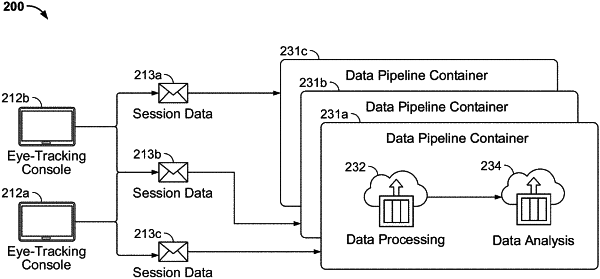| CPC A61B 5/163 (2017.08) [A61B 5/168 (2013.01); G16H 15/00 (2018.01); G16H 40/67 (2018.01); G16H 50/20 (2018.01)] | 23 Claims |

|
1. A computer-implemented method for development assessment using eye-tracking data, the computer-implemented method comprising:
receiving, at a network-connected server in communication with multiple patient-side portable tablet computing devices, session data of multiple eye-tracking sessions, the session data of each session comprising eye-tracking data of a corresponding patient collected by a corresponding one of the multiple patient-side portable tablet computing devices during presentation of a set of videos in the session;
processing, at the network-connected server, the session data of the multiple eye-tracking sessions in parallel to generate processed session data for the multiple eye-tracking sessions; and
for each session of the multiple eye-tracking sessions, loading, at the network-connected server, corresponding reference data for comparison to the processed session data and outputting an assessment report for the corresponding patient based on the processed session data and the corresponding reference data such that the assessment report includes an animation visualizing the eye-tracking data overlaid on corresponding visual stimulus stills from socially relevant moments of the set of videos, a visualization of aggregated reference data from a plurality of reference patients matched with the corresponding patient on one or more patient attributes, and annotations describing at least one of a visual stimulus content or eye-gaze patterns.
|